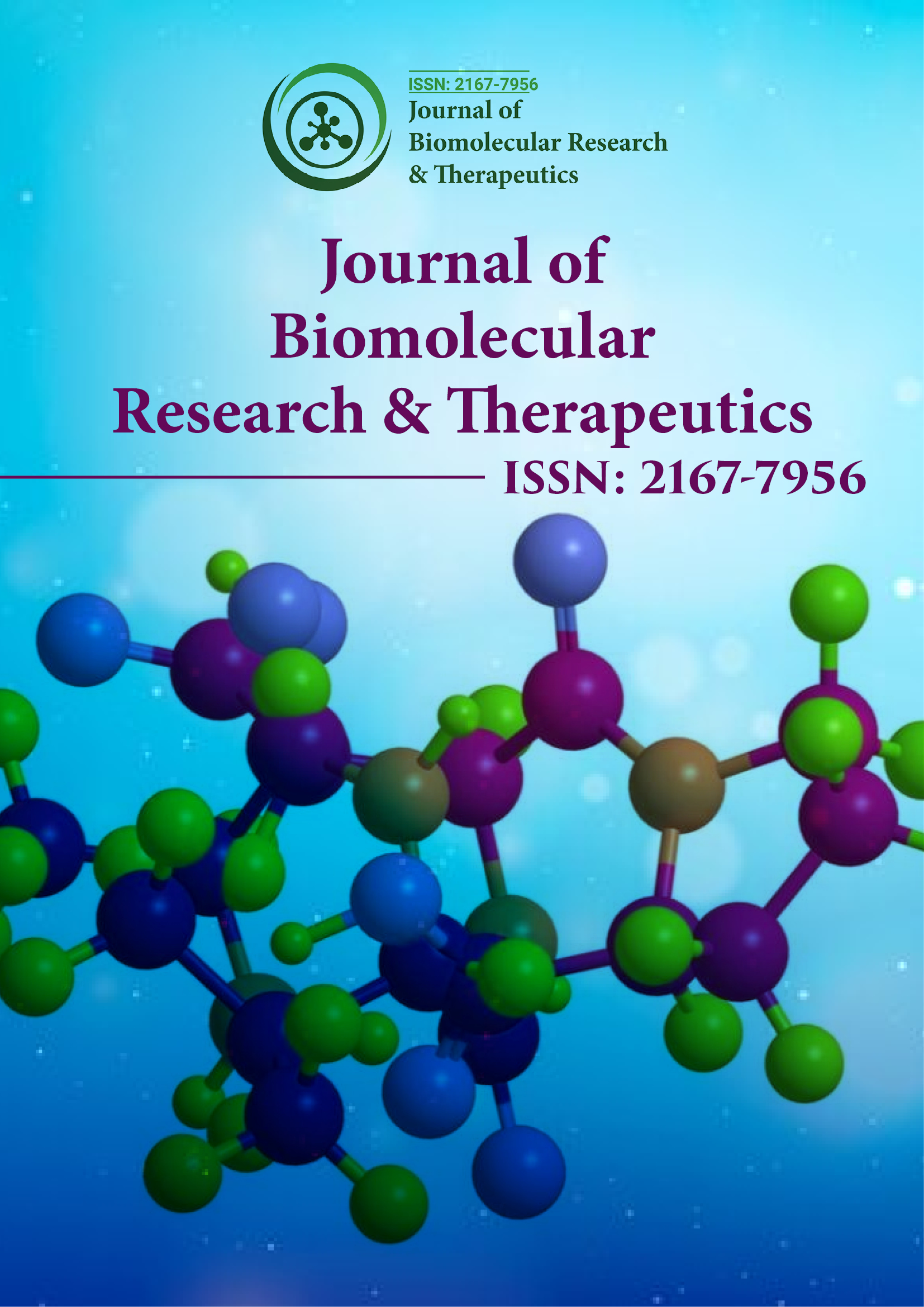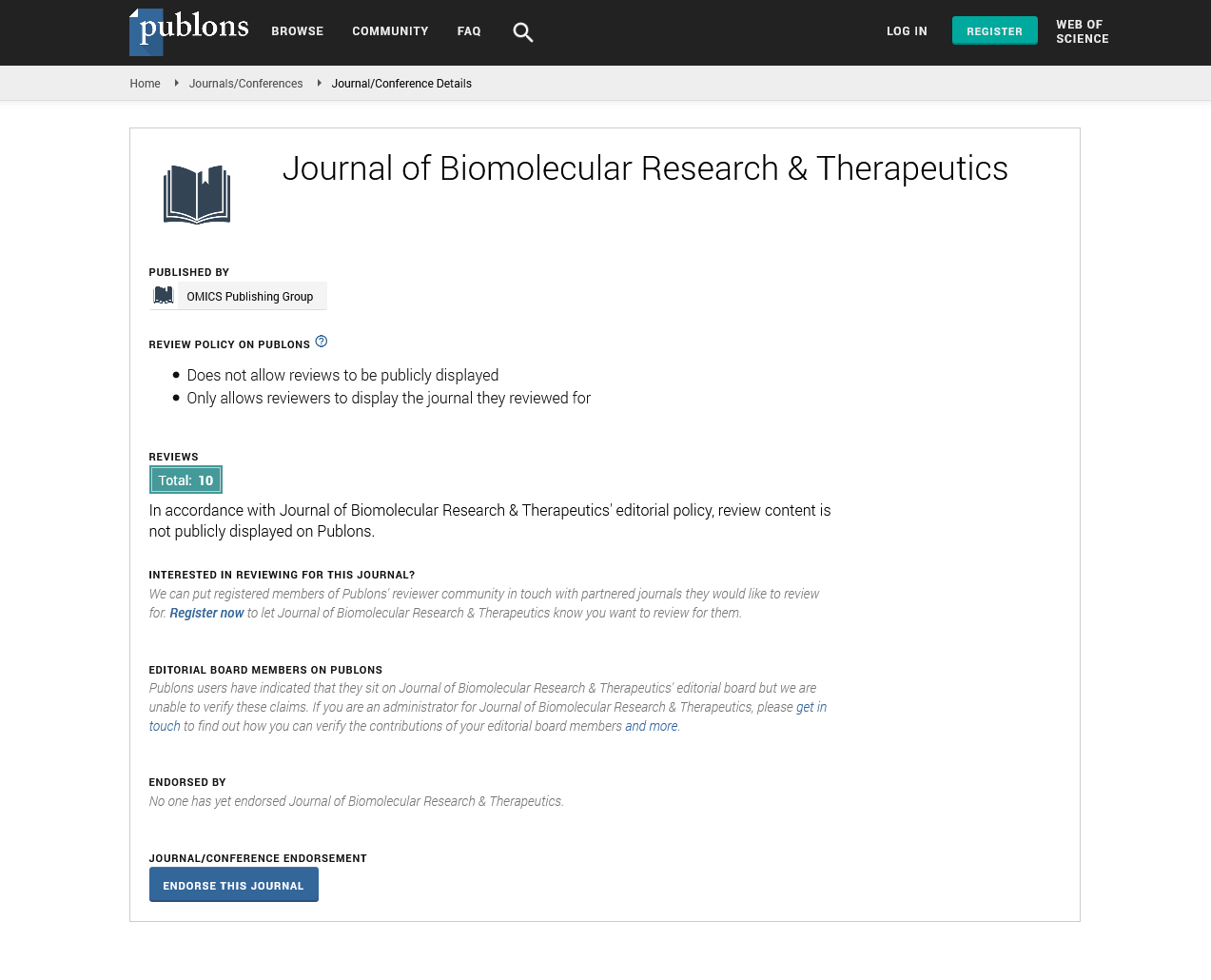PMC/PubMed Indexed Articles
Indexed In
- Open J Gate
- Genamics JournalSeek
- ResearchBible
- Electronic Journals Library
- RefSeek
- Hamdard University
- EBSCO A-Z
- OCLC- WorldCat
- SWB online catalog
- Virtual Library of Biology (vifabio)
- Publons
- Euro Pub
- Google Scholar
Useful Links
Share This Page
Journal Flyer

Open Access Journals
- Agri and Aquaculture
- Biochemistry
- Bioinformatics & Systems Biology
- Business & Management
- Chemistry
- Clinical Sciences
- Engineering
- Food & Nutrition
- General Science
- Genetics & Molecular Biology
- Immunology & Microbiology
- Medical Sciences
- Neuroscience & Psychology
- Nursing & Health Care
- Pharmaceutical Sciences
Brief Report - (2021) Volume 10, Issue 6
Brief Report on Quorum Sensing
Nan-Wei Su*Received: 15-Jun-2021 Published: 25-Jun-2021, DOI: 10.35248/2167-7956.21.10.162
Brief Report
Quorum sensing is the ability of a cell to detect and respond to cell population density through gene regulation in biology. As example quorum sensing allows bacteria to limit the expression of certain genes to high cell densities, where the phenotypes are most advantageous. Many bacteria employ quorum sensing to control gene expression based on the density of their local population. Some social insects utilize quorum sensing to select where to nest in a similar way. Quorum sensing could also help cancer cells communicate. Quorum sensing has various applications in computer and robotics, in addition to its role in biological systems.
In general, quorum sensing can be used as a decision-making process in any decentralized system where the components have (a) a way of determining the number of other components with which they interact, and (b) a standard reaction whenever a threshold number of components are discovered. Kenneth Nelson, Terry Platt, and J. Woodland Hastings initially reported quorum sensing in 1970, when they noticed a conditioning of the medium in which they had grown the bioluminescent marine bacterium Aliivibrio fischeri. Because these bacteria do not produce luciferase, they do not glow in freshly injected cultures, but only when the bacterial population has grown. They called the phenomena auto induction because they attributed the conditioning of the medium to the rising population of cells. Bacterial investigations provide some of the most well-known instances of quorum sensing. Bacteria employ quorum sensing to control the expression of various phenotypes, which in turn helps them coordinate their behavior.
Biofilm development, virulence factor expression, and motility are all prevalent characteristics. Quorum sensing is used by some bacteria to control bioluminescence, nitrogen fixation, and sporulation. The local density of the bacterial population in the nearby environment is used to determine the quorum-sensing function. It can happen both within a single bacterial species and between different species. Both Gram-positive and Gram-negative bacteria use quorum sensing, although the methods are quite different. To use quorum sensing indefinitely, bacteria must have three abilities: secretion of a signaling molecule, secretion of an auto inducer, and response control of gene transcription. This procedure is extremely reliant on the signaling molecules' diffusion mechanism. Individual bacteria normally release only a small amount of QS signaling molecules.
The process of blocking quorum sensing by interrupting signaling is known as quorum quenching. This is accomplished by inactivating signaling enzymes, introducing compounds that imitate signaling molecules and block their receptors, degrading signaling molecules, or altering quorum sensing signals as a result of enzyme activity. The local concentration of signaling molecules may surpass its threshold level at high cell density, causing gene expression alterations. Auto inducing peptides are used by Grampositive bacteria as auto inducers.
Citation: Linne A (2021) Brief Report on Quorum Sensing. J Biol Res Ther.10: 163
Copyright: © 2021 Linne A. This is an open-access article distributed under the terms of the Creative Commons Attribution License, which permits unrestricted use, distribution, and reproduction in any medium, provided the original author and source are credited.

